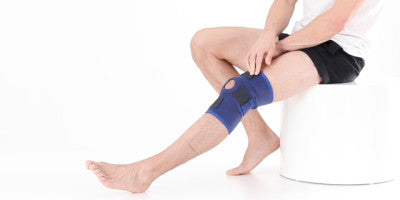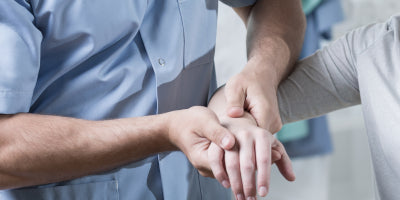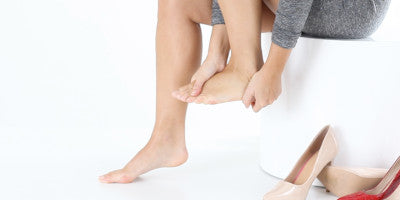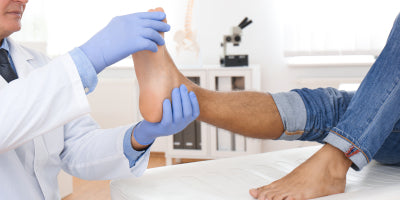How to prevent the most common ski injuries this season

Skiing and snowboarding are some of the world’s most popular winter activities, but they come with a risk, with an estimated 600,000 people getting injured on the slopes every year. [1]
Here at Neo G we’re all about staying safe, active and enjoying what you love, so here’s some top tips for preventing the most common ski injuries.
What are the most common ski injuries?

Knee-related injuries are the most common on the slopes, with ligament injuries making up the largest proportion of these injuries. Torn or sprained anterior cruciate ligament (ACL) and medial collateral ligament (MCL) injuries are the most common, accounting for about a third of all skiing injuries, according to researchers at the University of Vermont School of Medicine. [2]
The ACL is located at the front of your knee and prevents your knee from extending or twisting too far. This ligament can rupture if something, such as a ski snagging, forces your knee to over-twist, and can also occur if you land a jump with improper form or try to stand up to prevent yourself falling. MCL injuries on the other hand often occur when the skis are pointed towards each other in a snowplough position and the skier falls, usually when trying to come to a stop.
While knee injuries are the most common, they aren’t the only way you can be injured on the slopes. Other potential injury risks include:
- Thumb injuries – known as ‘skier’s thumb’
- Head injuries
- Spinal injuries
- Shoulder injuries – dislocations, fractures and rotator cuff tears
- Wrist fractures
- Leg injuries
How to avoid ski injuries

While there are risks associated with the sport, there are things you can do to lessen your chance of injury. The most important is knowing your skill level and understanding your abilities. Have an understanding of what runs you can do and stay in areas that you know you can handle comfortably.
It will also help to gain a greater understanding of good form, with many injuries resulting from poor form on the slopes. A couple of lessons, either at home or on holiday, can help you learn good technique or advance your current skills.
However, the most common injuries occur due to fatigue – many ski injuries occur on the last run of the day. As such, ensuring you’re in good physical shape and can handle a long and rigorous day on the slopes is key to preventing injuries. In the run up to your trip, focus on a weight-training programme that helps to improve your leg and core strength – squats, dead lifts and lunges are all good exercises to build into your routine in the run up to ski season.
How to return to skiing after injury

There are two factors to consider when returning to skiing after an injury – being physically ready and being mentally ready. When heading back onto the slopes you might be worried about getting injured again, but the best way is to return feeling confident but cautious. Start out with some easier runs, and move your way up. Listen to your body and be prepared for some discomfort, and if you feel any pain, stop.
A support can help when returning to the sport, by providing you with stability and reducing the pain. Not only can a knee support can help to reduce lateral and rotation movements, which are the most common ways for the knee to be injured, but having one on can help you to feel more confident when getting back out on the slopes, which will be key to avoiding injury to the area again.
After a long day skiing, your muscles and joints can often suffer from swelling or stiffness - our reusable Neo G Hot and Cold therapy packs can help sooth aches and pains helping you relax and rehabilitate for the days ahead.
We know it’s not just knees that get injured on the slopes, so for our full range of ski supports to help you feel more confident this ski season, find our full range of skiing supports here.
Don’t let injuries stop you doing what you love. Stay active with Neo G.











